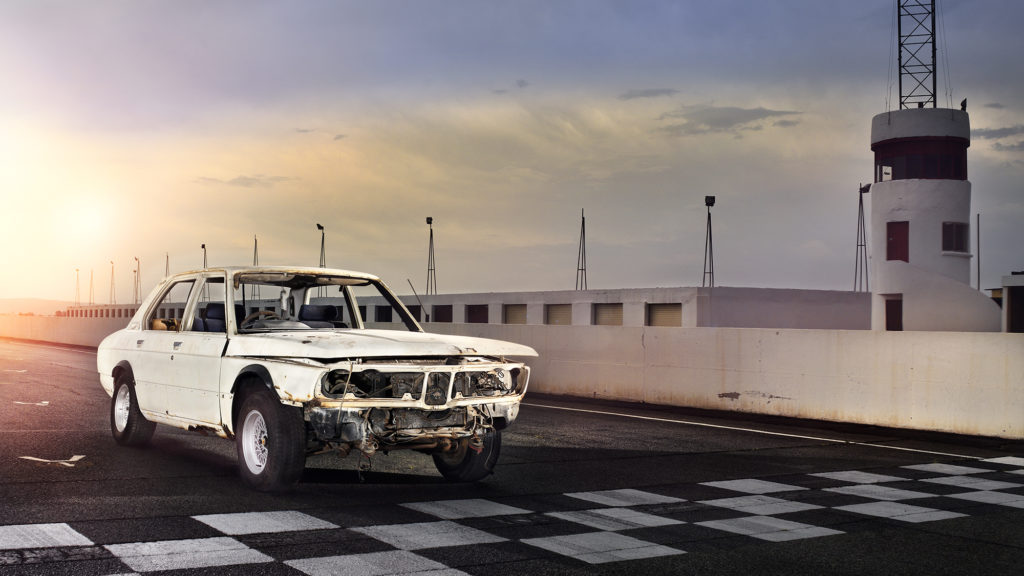The other day I was browsing Craigslist, as we car folk do. I won’t get too far into the weeds regarding how I search for specific cars that I’d like to own—from my own zip code to across the country—but I will say that this time I was just casually browsing. I wasn’t looking through a saved search for something I was pining for; I was just seeing what was for sale.
And then the inevitable happened: I came across something I’d actually consider owning.
Drawn in by the photos of a weathered E21 320i in a dreamy and perfectly patinated color combination with a beachside backdrop, I clicked on the ad and read through the description. Looking at the photos, which in my experience almost always paint a picture rosier than reality, things didn’t seem too bad.
But the description contained a one-word dealbreaker: rust.
They say the Germans invented rust and subsequently licensed the process to the Italians. I tend to believe it.
Living on the Left Coast, we generally don’t find rust a factor that we have to contend with, as they do in other parts of the country. I’m originally from Illinois, so I know what rust looks like—and what just a few winter seasons do to an undercarriage that hasn’t been treated, sprayed clean, and maintained. It’s incredible how once-carefully-formed metal succumbs so easily to nature, but that’s just the way it is. Thankfully, in California, large swathes of cars from previous decades haven’t been wiped out by the tin worm. Smog laws and running costs have taken more than a few old thermal-reactor-laden 733i sedans and the like off the road here, but otherwise, the West Coast is still something of a haven where buyers prefer to find a car.
Back to the E21 320i: I re-read the description a handful of times. The seller said that it “could definitely use some bodywork due to rust,” further citing the coastal climate, but the photos didn’t show anything obvious outside of a few surface areas where the paint had faded away to bare metal, which was now rusting. Would it eventually punch through if left unchecked? Sure. Was I looking at restoring this buy-on-a-whim 3 Series? Not a chance.
Not the E21 in question.
But it did look like a fun driver nonetheless.
Naturally, I expect the rust to be worse than what can be seen in the photos. I know how an E30 rusts, and I’ve repaired some of it myself before, albeit not to any kind of a professional standard. It was a long ton of work, and I don’t want to dive into anything of the sort again.
But for some reason I e-mailed the seller asking for a more detailed description of the rust, with a few specific questions, along with photos. At the bottom, I attached a phone number of mine that I use for these kinds of transactions, to demonstrate that I’m serious.
It wasn’t until after this little exercise that I realized I had just succumbed to one of the age-old follies associated with car-buying: putting on those rose-tinted glasses and trying to see things for the best as opposed to the worst.
I try not to do this with cars. When it comes to repairs, I rarely skimp; as I’ve explained before, I buy high-quality parts that I’ve spent hours of my life researching, for the best price. Depending on the car, I usually like to do as much of the while you’re in there stuff as possible, as long as it doesn’t completely transform into mission creep. I’m willing to experiment on something old and tired like my E30, but for the most part I insist on doing things the right way the first time.
But when I buy a car, or am looking at a potential candidate, whether it’s through a screen or in the metal, some of my objectivity falls away. It’s not like I forget how difficult and involved rust repair can be, or how much a new set of Michelins will cost, but rather a gross overestimation of my willingness to tolerate flaws and expense.
I’ve somehow been able to defy it with my 1985 325e, which has responded astoundingly well to all maintenance and projects, while never leaving me stranded, even with a long laundry list of things that should be done. There are broken things on the car that may or may not be fixed—ever. I’d like to give the repairs a try, and might be disappointed if I don’t, but I’ve managed to stop the car’s inevitable decline and journey to the scrap heap for now—during my ownership tenure, anyway.
The 325e now wears a hood that matches the rest of the body.
With other cars, it’s translated to cold feet and a less-than-enjoyable ownership experience. These cars weren’t bad, by any means, but they weren’t right for me, whether because I had bitten off more than I could handle in terms of a project or had bought a car about which I was overly optimistic from the start that would simply never meet my standards for the amount of money already spent.
It happens more often than we’d like to admit. You’re browsing the classifieds when suddenly something pops up that has you measuring the garage and running a quick online insurance quote. All too frequently, we let the satisfaction of finding something we like for sale in the vast world overcome our ability to think with reason and rationality.
What happened with the 320i, and how bad was the rust? I’ll let you know when or if I hear back from the seller and have potentially had a chance to check things out firsthand.—Alex Tock
[Photos courtesy Alex Tock, BMW AG, RM Sotheby’s.]
